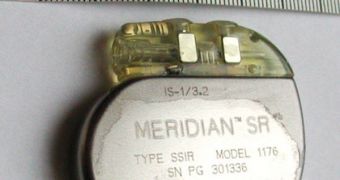A team of investigators believes that severe cases of depression could be addressed by implanting pacemaker-like devices in the brain. These tools would provide relief in the case of patients that do not readily respond to standard therapies and medication.
Official statistics show that an estimated 10 percent of all cases of depression are very severe. This means that patients are very likely to need special treatment in order to recover properly.
Established methods of addressing the mental disorder generally fail for this people, and this is the main reason why it's so important to develop a therapy or drug that would reach this segment as well.
Using a “brain pacemaker” might be scientists' best bet in doing so. Specific areas of the human brain have been proven in past investigations to respond extremely well to electrical stimulation.
Deep brain stimulation has been proven scientifically to be effective in more than half of severe depression patients. All of these individuals experience a considerable improvement in mood, that cannot be attributed to any other external or internal factors or influences.
In a new study, German experts at the University of Bonn and colleagues in the United States announce the discovery of a new structure in the brain that could potentially be used as a new target for therapies.
Scientists with the international collaboration are convinced that using this structure as a way into the brain of depression patients could help take care of the most severe symptoms, PsychCentral reports.
In fact, the researchers believe that targeting this specific brain region would produce even better results than similar approaches involving electrical stimulation. They also believe that patients will also experience considerably fewer side effects.
“Depression does not return in patients who responded to the stimulation. The method appears to have lasting effects – and this is in the case of the most treatment-resistant patient group described in the literature. This has never before happened,” says Dr. Thomas Schläpfer.
The expert holds an appointment as a professor at the Bonn Hospital for Psychiatry and Psychotherapy.
Thus far, scientists focused on three structures in the brain, the nucleus accumbens, the internal capsule, and a structure known as cg25. Regardless of where stimulation was applied, the results were nearly identical in every respect.
During the new study, experts used a novel tomography method to determine why that is, and discovered that all three structures are connected by the same medial forebrain bundle “cable system.”
The most important function for this pathway is as a feedback loop. It allows us to anticipate positive experiences, Dr. Volker Coenen explains. “This circuit motivates us to take action,” he goes on to say.
The expert holds an appointment as a brain surgeon and a professor at the German hospital. His team published additional details of its method in the latest issue of the esteemed scientific journal Neuroscience and Biobehavioral Reviews.
The main conclusion of the study was that applying electrical impulses to this area via a neural pacemaker could allow for improvements in people's ability to build positive feedbacks in the medial forebrain bundle.

 14 DAY TRIAL //
14 DAY TRIAL //